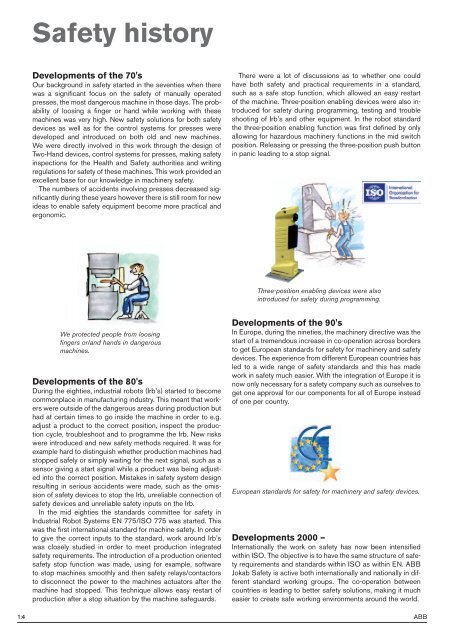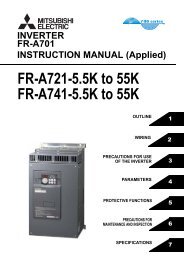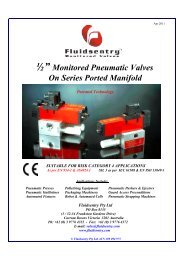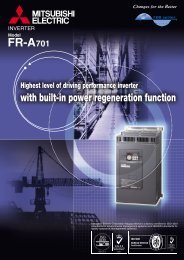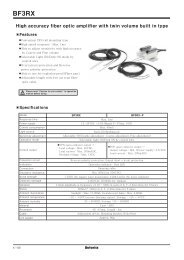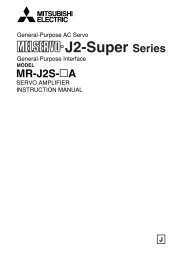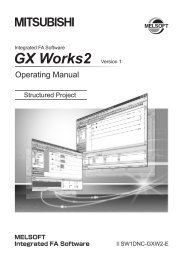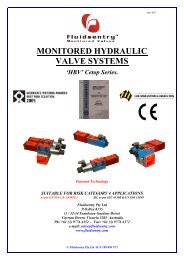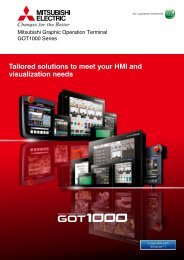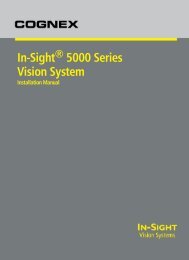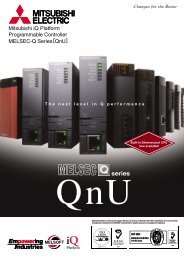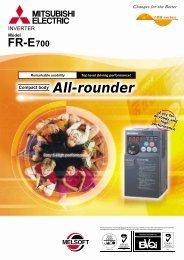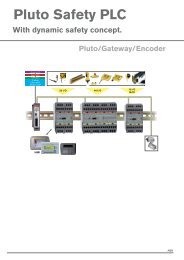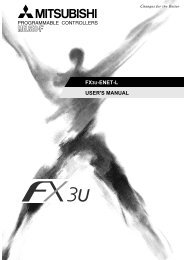The Safety Handbook ABB Jokab - Automation Systems and Controls
The Safety Handbook ABB Jokab - Automation Systems and Controls
The Safety Handbook ABB Jokab - Automation Systems and Controls
- No tags were found...
Create successful ePaper yourself
Turn your PDF publications into a flip-book with our unique Google optimized e-Paper software.
<strong>Safety</strong> historyDevelopments of the 70'sOur background in safety started in the seventies when therewas a significant focus on the safety of manually operatedpresses, the most dangerous machine in those days. <strong>The</strong> probabilityof loosing a finger or h<strong>and</strong> while working with thesemachines was very high. New safety solutions for both safetydevices as well as for the control systems for presses weredeveloped <strong>and</strong> introduced on both old <strong>and</strong> new machines.We were directly involved in this work through the design ofTwo-H<strong>and</strong> devices, control systems for presses, making safetyinspections for the Health <strong>and</strong> <strong>Safety</strong> authorities <strong>and</strong> writingregulations for safety of these machines. This work provided anexcellent base for our knowledge in machinery safety.<strong>The</strong> numbers of accidents involving presses decreased significantlyduring these years however there is still room for newideas to enable safety equipment become more practical <strong>and</strong>ergonomic.<strong>The</strong>re were a lot of discussions as to whether one couldhave both safety <strong>and</strong> practical requirements in a st<strong>and</strong>ard,such as a safe stop function, which allowed an easy restartof the machine. Three-position enabling devices were also introducedfor safety during programming, testing <strong>and</strong> troubleshooting of Irb’s <strong>and</strong> other equipment. In the robot st<strong>and</strong>ardthe three-position enabling function was first defined by onlyallowing for hazardous machinery functions in the mid switchposition. Releasing or pressing the three-position push buttonin panic leading to a stop signal.Three-position enabling devices were alsointroduced for safety during programming.We protected people from loosingfingers or/<strong>and</strong> h<strong>and</strong>s in dangerousmachines.Developments of the 80'sDuring the eighties, industrial robots (Irb’s) started to becomecommonplace in manufacturing industry. This meant that workerswere outside of the dangerous areas during production buthad at certain times to go inside the machine in order to e.g.adjust a product to the correct position, inspect the productioncycle, troubleshoot <strong>and</strong> to programme the Irb. New riskswere introduced <strong>and</strong> new safety methods required. It was forexample hard to distinguish whether production machines hadstopped safely or simply waiting for the next signal, such as asensor giving a start signal while a product was being adjustedinto the correct position. Mistakes in safety system designresulting in serious accidents were made, such as the omissionof safety devices to stop the Irb, unreliable connection ofsafety devices <strong>and</strong> unreliable safety inputs on the Irb.In the mid eighties the st<strong>and</strong>ards committee for safety inIndustrial Robot <strong>Systems</strong> EN 775/ISO 775 was started. Thiswas the first international st<strong>and</strong>ard for machine safety. In orderto give the correct inputs to the st<strong>and</strong>ard, work around Irb’swas closely studied in order to meet production integratedsafety requirements. <strong>The</strong> introduction of a production orientedsafety stop function was made, using for example, softwareto stop machines smoothly <strong>and</strong> then safety relays/contactorsto disconnect the power to the machines actuators after themachine had stopped. This technique allows easy restart ofproduction after a stop situation by the machine safeguards.Developments of the 90'sIn Europe, during the nineties, the machinery directive was thestart of a tremendous increase in co-operation across bordersto get European st<strong>and</strong>ards for safety for machinery <strong>and</strong> safetydevices. <strong>The</strong> experience from different European countries hasled to a wide range of safety st<strong>and</strong>ards <strong>and</strong> this has madework in safety much easier. With the integration of Europe it isnow only necessary for a safety company such as ourselves toget one approval for our components for all of Europe insteadof one per country.European st<strong>and</strong>ards for safety for machinery <strong>and</strong> safety devices.Developments 2000 –Internationally the work on safety has now been intensifiedwithin ISO. <strong>The</strong> objective is to have the same structure of safetyrequirements <strong>and</strong> st<strong>and</strong>ards within ISO as within EN. <strong>ABB</strong><strong>Jokab</strong> <strong>Safety</strong> is active both internationally <strong>and</strong> nationally in differentst<strong>and</strong>ard working groups. <strong>The</strong> co-operation betweencountries is leading to better safety solutions, making it mucheasier to create safe working environments around the world.1:4<strong>ABB</strong>


